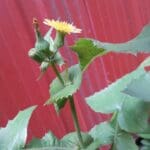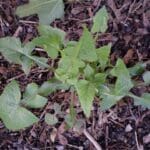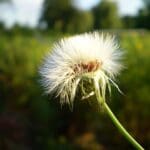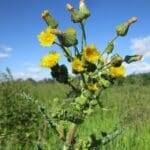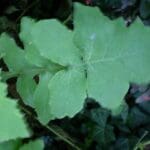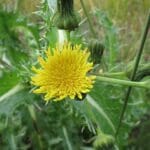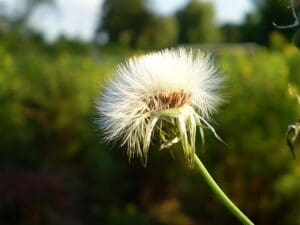Sow Thistle / Spring / Summer/ Autumn / Edible
Common names
Sow thistle, hare thistle, hare’s lettuce
Botanical name
Sonchus (genus of several species)
Scientific Classification
Kingdom – Plantae
Order –Asterales
Family – Asteraceae
Physical Characteristics for Sow Thistle
Leaves
Looks like a true thistle, but the leaves are much softer. Sow Thistles have a rosette of basal leaves from which a flower stalk is sent up.
Flowers
The flowers are similar in appearance and colour to Dandelions, but much smaller. There may be several flowers coming off the main stem, on short stalks. When the leaves are split, they exude a white sap or “latex”
Seeds
Again similar to Dandelion but smaller, with the seed ‘parachutes’ blowing in the wind when ready. The main difference is the number of flowers per head. Sow thistle will always have several flowers per stalk whereas Dandelion will only ever have one flower per stalk.
Habitat
Native to Europe and Asia, though can be found in most temperate regions. Found on bare ground, pavement cracks, agricultural land, and garden borders.
Known hazards
Unclear if any recorded
Could be confused with
Groundsel (Senecio vulgaris), which has blunt fuzzy leaves rather than jagged spiky leaves, is a potential poisonous lookalike. Sow thistle could also be confused with Dandelions (Taraxacum officinale), and members of the true thistle family, Cirsium, but both of these are edible. Dandelions do not have spikes on the edges of their leaves, and true thistles have much tougher leaves.
Edible use
Should be eaten before flowering, after which time the plant becomes bitter. The leaves and stem can be eaten raw in salads, or steamed and used in the same way as spinach. The leaves of the basal rosette tend to have more spikes, but are generally less bitter
Notes on Herbal uses
It has been used for various reasons, including as a sedative, tonic, blood purifier, and hepatic, as well as a treatment for warts.
If you have a medical complaint, please see your doctor
Extra notes from the Foragers
The botanical name comes from the ancient Greek word meaning “hollow”, in reference to the hollow stem.
The “milk” of the sow thistle has been used as a folk remedy for warts



